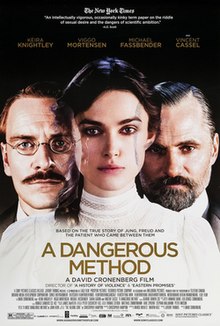
David Paul Cronenberg is a Canadian film director and screenwriter. He is a principal originator of the body horror genre, with his films exploring visceral bodily transformation, infectious diseases, and the intertwining of the psychological, physical, and technological. Cronenberg is best known for exploring these themes through sci-fi horror films such as Shivers (1975), Scanners (1981), Videodrome (1983) and The Fly (1986), though he has also directed dramas, psychological thrillers and gangster films.

Sigmund Freud was an Austrian neurologist and the founder of psychoanalysis, a clinical method for evaluating and treating pathologies seen as originating from conflicts in the psyche, through dialogue between patient and psychoanalyst, and the distinctive theory of mind and human agency derived from it.

Carl Gustav Jung was a Swiss psychiatrist and psychoanalyst who founded analytical psychology. He was a prolific author, illustrator, and correspondent, and a complex and controversial character, presumably best known through his "autobiography" Memories, Dreams, Reflections.
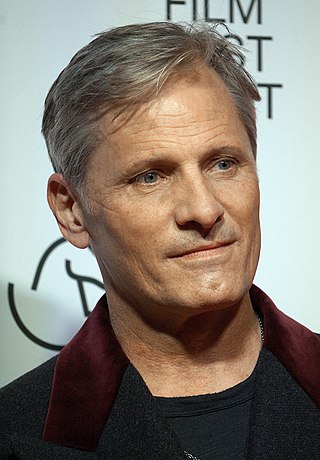
Viggo Peter Mortensen Jr. R is an American actor. He made his film debut in a small role in Peter Weir's 1985 thriller Witness. He appeared in several notable films, including The Indian Runner (1991), Carlito's Way (1993), Crimson Tide (1995), Daylight (1996), The Portrait of a Lady (1996), G.I. Jane (1997), A Perfect Murder (1998), A Walk on the Moon (1999), and 28 Days (2000).

Keira Christina Knightley is an English actress. Known for her work in independent films and blockbusters, particularly period dramas, she has received numerous accolades, including nominations for two Academy Awards, three BAFTAs, three Golden Globes, and a Laurence Olivier Award. In 2018, she was appointed Officer of the Order of the British Empire (OBE) for services to drama and charity.
Free association is the expression of the content of consciousness without censorship as an aid in gaining access to unconscious processes. The technique is used in psychoanalysis which was originally devised by Sigmund Freud out of the hypnotic method of his mentor and colleague, Josef Breuer.
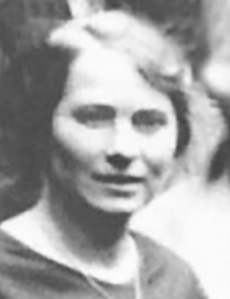
Sabina Nikolayevna Spielrein was a Russian physician and one of the first female psychoanalysts. She was in succession the patient, then student, then colleague of Carl Gustav Jung, with whom she had an intimate relationship during 1908–1910, as is documented in their correspondence from the time and her diaries. She also met, corresponded, and had a collegial relationship with Sigmund Freud. She worked with and psychoanalysed Swiss developmental psychologist Jean Piaget. She worked as a psychiatrist, psychoanalyst, teacher and paediatrician in Switzerland and Russia. In a thirty-year professional career, she published over 35 papers in three languages, covering psychoanalysis, developmental psychology, psycholinguistics and educational psychology. Among her works in the field of psychoanalysis is the essay titled "Destruction as the Cause of Coming Into Being", written in German in 1912.
In classical Freudian psychoanalytic theory, the death drive is the drive toward death and destruction, often expressed through behaviors such as aggression, repetition compulsion, and self-destructiveness. It was originally proposed by Sabina Spielrein in her paper "Destruction as the Cause of Coming Into Being" in 1912, which was then taken up by Sigmund Freud in 1920 in Beyond the Pleasure Principle. This concept has been translated as "opposition between the ego or death instincts and the sexual or life instincts". In Beyond thePleasure Principle, Freud used the plural "death drives" (Todestriebe) much more frequently than the singular.

Jeremy Jack Thomas, CBE is a British film producer, founder and chairman of Recorded Picture Company. He produced Bernardo Bertolucci's The Last Emperor, which won the 1988 Academy Award for Best Picture. In 2006 he received a European Film Award for Outstanding European Achievement in World Cinema. His father was director Ralph Thomas, while his uncle Gerald Thomas directed all of the films in the Carry On franchise.
The Vienna Psychoanalytic Society, formerly known as the Wednesday Psychological Society, is the oldest psychoanalysis society in the world. In 1908, reflecting its growing institutional status as the international psychoanalytic authority of the time, the Wednesday group was reconstituted under its new name with Sigmund Freud as President, a position he relinquished in 1910 in favor of Alfred Adler. During its 36-year history, between 1902 and 1938, the Society had a total of 150 members.

Eastern Promises is a 2007 British-Canadian gangster film directed by David Cronenberg from a screenplay by Steven Knight. The film tells the story of Anna, a Russian-British midwife who delivers the baby of a drug-addicted 14-year old trafficked Ukrainian girl who dies in childbirth. After Anna learns that the teen was forced into prostitution by the Russian Mafia in London, the leader of the Russian gangsters threatens the baby's life, and Anna is warned off by his menacing henchman.

Otto Hans Adolf Gross was an Austrian psychoanalyst. A maverick early disciple of Sigmund Freud, he later became an anarchist and joined the utopian Ascona community.
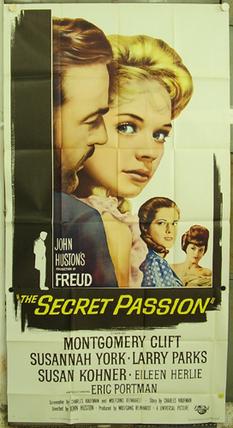
Freud: The Secret Passion, or simply Freud, is a 1962 American biographical drama film directed by John Huston and produced by Wolfgang Reinhardt. Based on the life of Austrian neurologist Sigmund Freud, it stars Montgomery Clift as Freud and Susannah York as his patient Cecily Koertner. Other cast members include Larry Parks, Susan Kohner, Eileen Herlie, Eric Portman, and David McCallum. The screenplay was by Charles Kaufman and Reinhardt, with some elements from a script by Jean-Paul Sartre, who withdrew his name from the film.

HanWay Films is an independent British international sales, distribution and marketing company specializing in theatrical feature films.
John Michael Kerr was an American editor, psychologist, and author raised in New York City. He was best known for his 1993 nonfiction book A Most Dangerous Method: The Story of Jung, Freud, and Sabina Spielrein, which explores an episode in the history of psychoanalysis. It examined the relationship between Sigmund Freud, Carl Jung, and Sabina Spielrein.

Cattiva is a 1991 Italian drama film directed by Carlo Lizzani. The film is loosely based on real life events of Carl Jung, the founder of analytical psychology, and of Sabina Spielrein. For this film Giuliana De Sio was awarded a David di Donatello for Best Actress.
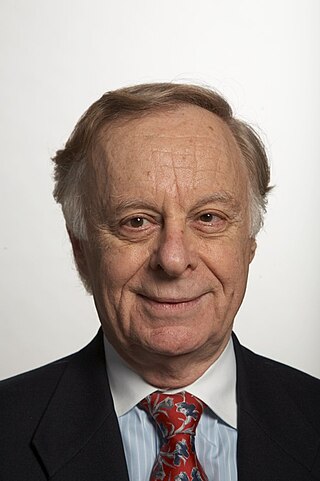
Henry Zvi Lothane is a Polish-born American psychiatrist, psychoanalyst, educator and author. Lothane is currently Clinical Professor at Icahn School of Medicine at Mount Sinai, New York City, specializing in the area of psychotherapy. He is the author of some eighty scholarly articles and reviews on various topics in psychiatry, psychoanalysis and the history of psychotherapy, as well as the author of a book on the famous Schreber case, entitled In Defense of Schreber: Soul Murder and Psychiatry. In Defense of Schreber examines the life and work of Daniel Paul Schreber against the background of 19th and early 20th century psychiatry and psychoanalysis.
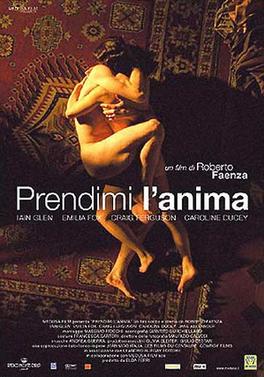
The Soul Keeper is a 2002 Italian-French-British romance-drama film directed by Roberto Faenza. It is loosely based on real life events of Russian psychoanalyst and physician Sabina Spielrein and notably on her therapeutic and sentimental relationship with fellow psychoanalyst Carl Gustav Jung.
Archaic mother is the mother of earliest infancy, whose continuing influence is traced in psychoanalysis, and whose (repressed) presence is considered to underlie the horror film.
Scheina Grebelskaja (1886-19?) was a Russian psychoanalyst who worked at the Burghölzli, the psychiatric hospital of the University of Zürich. She was one of the early pioneers in psychoanalytic theory. Her work was fundamental in supporting the Freudian theory about the existence of subconscious drives.
